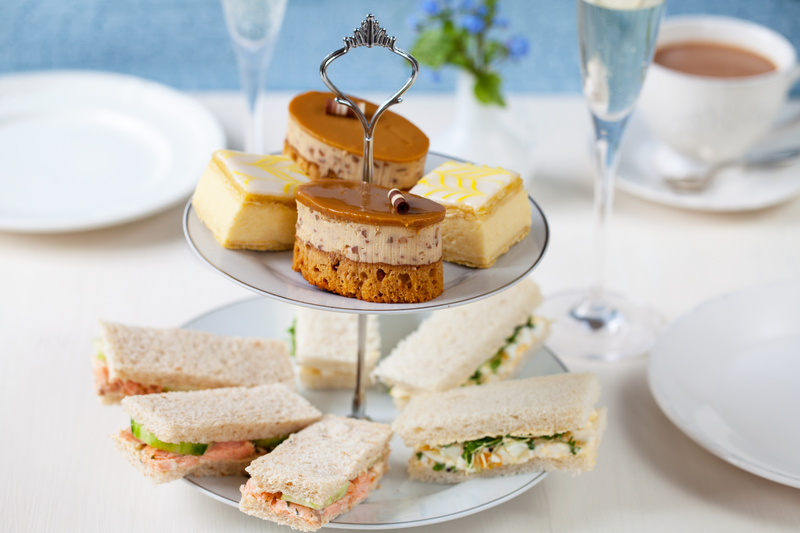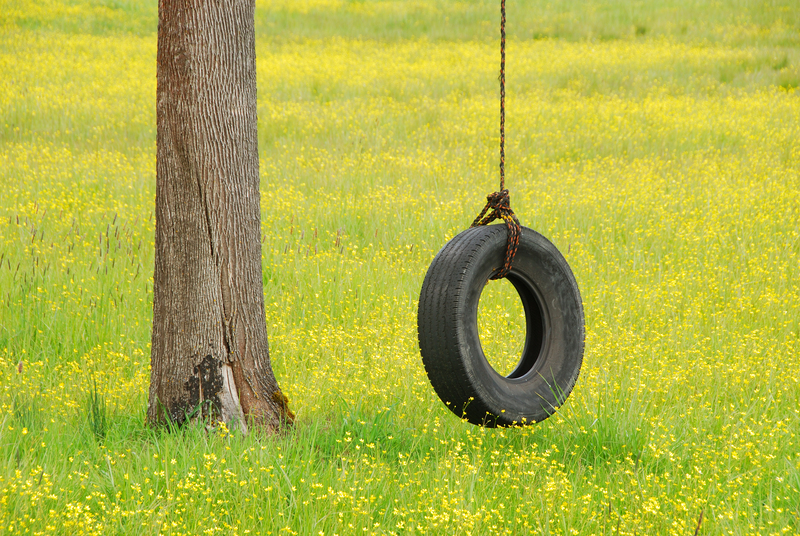The Beauty of Minimalist Spaces Minus the Clutter
Minimalism is far more than just a design trend--it is a lifestyle, a philosophy, and a statement about the way we choose to live. Over recent years, the appreciation for minimalist spaces free of clutter has exploded worldwide, largely because people are seeking serenity, focus, and order. But what is it about these simple, clean environments that captivates us so deeply? In this comprehensive article, we'll explore the beauty of uncluttered minimalist spaces, why they matter, and how you can create a serene sanctuary in your own home.

Understanding the Minimalist Aesthetic
The minimalist style revolves around the principle of 'less is more.' In minimalist spaces, every object has a purpose, and visual harmony is created by stripping away excess. This style focuses on:
- Simplicity in design - Clean lines and basic shapes replace ornate, fussy decorations.
- Intentional spaces - Each room is designed for function as well as form.
- Restrained color palettes - Usually whites, greys, and earthy tones to promote calmness.
- Quality over quantity - Fewer but better, lasting objects feature in the environment.
Minimalist interiors sans clutter shine by exposing the essential. You can appreciate the workmanship of the furniture, admire how light moves across blank surfaces, and enjoy the sense of physical and psychological space.
Why Choose Minimalist Spaces Without Clutter?
Decluttering Your Mind by Decluttering Your Space
Our physical environment often mirrors our mental state. Cluttered rooms can create feelings of anxiety, overwhelm, or even stress. On the contrary, minimalist living spaces without clutter promote tranquility, increase focus, and provide a much-needed respite from our busy, overstimulated lives.
Enhancing Functionality and Comfort
A well-planned minimalist room is incredibly functional. Without unnecessary items crowding your space, every object is easily accessible and movement is effortless. Such organized spaces are easier to clean and maintain, making life less complicated.
Aesthetic Appeal: Subtle Sophistication
Some might initially perceive minimalist decor as bare or impersonal. However, the reality is that uncluttered, minimalist spaces exude timeless sophistication. Their beauty lies in restraint, the play of light and shadow, the textures, and the unique forms that stand out in the absence of disorder.
Key Elements of Stunning Minimalist Interiors
Creating an impressive minimalist room takes thoughtful intention. Here are the essential design elements for cultivating the beauty of a clutter-free minimalist home:
1. Neutral and Muted Color Schemes
Limiting your palette to whites, off-whites, greys, and soft earth tones instantly opens up a space, making it feel bigger and calmer. You might inject a sparse pop of color through a piece of art or a cushion, but generally, keep the hues subdued for maximum serenity.
2. Functional, High-Quality Furnishings
- Choose furniture with simple silhouettes--straight lines, gentle curves, and natural materials such as wood, leather, and linen.
- Opt for items that serve multiple purposes, like storage ottomans, sleek credenzas, or fold-away tables.
- Remember: when every piece is intentional, the room feels more welcoming and less chaotic.
3. Abundant Negative Space
Negative space, or the empty areas between objects, is a hallmark of minimalist design. The focus here is not on 'filling' the room, but allowing it to breathe. These blank spaces highlight the elements you do have, making them stand out all the more.
4. Natural Light and Airiness
Large, unobstructed windows, sheer curtains, and glass doors can usher in abundant daylight. The interplay of natural light with minimal, light-toned decor makes the entire space feel airy, open, and inherently peaceful.
5. Thoughtful Storage Solutions
- In a true clutter-free minimalist home, storage is subtle but efficient.
- Built-in cabinets, recessed shelving, and hidden drawers keep essentials out of sight but close at hand.
- This allows for clean sightlines and a tidy, undisturbed appearance.
The Psychological Benefits of Uncluttered Minimalist Spaces
Minimalist design doesn't just look good--it feels good too. Here are some scientifically backed mental health benefits to embracing the beauty of minimalist living minus the clutter:
- Reduced stress and anxiety: Clear spaces help reduce visual overstimulation which can heighten anxiety.
- Improved focus and productivity: An organized, distraction-free area allows your mind to focus on tasks more effectively.
- Heightened creativity: Empty walls and open floors give your brain 'space' to relax and foster fresh ideas.
- Greater sense of control: Knowing exactly where things are and having less to maintain lowers cognitive load.
- Enhanced mood and well-being: The serenity of minimalist spaces has been linked to improved emotional states and happiness.
How to Create a Beautiful Minimalist Space Minus the Clutter
Step 1: Start with a Ruthless Decluttering
A clean slate is vital to embracing the essence of minimalism. Begin by removing everything from the room. Examine each item and ask yourself:
- Do I use this regularly?
- Does it serve a necessary purpose?
- Does it spark genuine joy?
If the answer is no, donate, recycle, or discard it. Be strict--sentimental clutter can be the hardest to part with, but it is essential for true change.
Step 2: Choose a Calming Base Palette
Select a few complementary neutral shades as the foundation for your room. Whites, taupes, beiges, and greys are versatile choices for walls, floors, and major furnishings.
Step 3: Invest in Multi-functional Pieces
Minimalist spaces minus the clutter thrive on clever furniture. Look for beds or couches with storage underneath, extendable dining tables, or simple bookcases that double as room dividers.
Step 4: Maximize Natural Light
Keep windows unobstructed. Use light, flowing fabrics for window treatments, and strategically place mirrors to double the impact of daylight. The brighter the room, the larger and more inviting it appears.
Step 5: Incorporate Nature
Although minimalist spaces typically avoid excess accessories, a well-chosen houseplant or a vase with fresh flowers can add life without visual clutter. Natural wood, stone, wool, or linen can give warmth and texture, making the room feel inviting, not sterile.
Step 6: Adopt the 'One-in, One-out' Rule
To sustain a clutter-free minimalist home, commit to only bringing a new item in if you remove an old one. This prevents the slow creep of clutter and encourages thoughtful purchasing.
Step 7: Practice Mindful Decorating
When adding art or decor, think 'less but better.' A single statement painting or sculpture has far more impact than a jumble of small frames. Choose pieces you truly love and that embody your personality.
The Minimalist Movement: Beyond Aesthetics
Minimalism is gaining ground in several areas of life--not just interior design. For many, it represents an intentional, mindful approach to living that prioritizes quality, tranquility, and meaning:
- Sustainable living: Owning less means consuming less, which in turn reduces waste and promotes environmental stewardship.
- Financial freedom: By investing in fewer but higher-quality pieces, you save money in the long run and avoid unnecessary purchases.
- Emotional well-being: Surrounding yourself with only what matters fosters gratitude and contentment.
When your space is uncluttered and serene, it often acts as a catalyst for decluttering other areas of your life--your schedule, your digital world, even your relationships. Simplicity brings clarity to what is truly essential.
Common Myths About Minimalist Spaces--and the Truths
- Myth: Minimalist spaces are cold and unwelcoming.
Truth: With thoughtful layering of textures, warm neutrals, and personal touches, minimalist homes can be incredibly cozy and inviting. - Myth: You have to get rid of everything you own.
Truth: Minimalism is about intentional ownership, not deprivation. Keep what you love and use. - Myth: Minimalist design is boring or lacks personality.
Truth: By reducing clutter, the items that remain--such as meaningful artwork or a unique chair--truly shine and reflect your individual tastes. - Myth: It's expensive to achieve a minimalist look.
Truth: Less is more! Start by removing rather than buying, and invest only in essential, quality pieces over time.
Inspiring Minimalist Spaces: Real-Life Examples
1. Scandinavian Interiors
Famed for their light woods, crisp whites, and focus on functionality, Scandinavian homes prove that minimalist living can also be warm and approachable. Their secret? A blend of natural materials, huge windows, and strategic pops of color.
2. Japandi Spaces
This design movement blends Japanese and Scandinavian styles for the ultimate in uncluttered serenity. Key features include low-profile furniture, earthy textures, and mindful placement of accessories.
3. Modern Urban Lofts
Exposed brick, vast open spaces, and a 'less is more' approach allow architectural features to shine. Minimalist, uncluttered lofts in cities worldwide showcase the urban adaptation of this timeless aesthetic.

Final Thoughts: Embracing the Beauty of Minimalist Spaces Without Clutter
Choosing minimalism minus the clutter is not about purging joy or living in a sterile environment. Rather, it is about creating room for what truly matters--peace, purpose, and authentic beauty. In a world brimming with stimuli and noise, a clean, well-curated space becomes a personal retreat, a place where you can think, breathe, and just be.
If you are yearning for calm, craving elegance, or simply seeking more from less, consider embracing the beauty of minimalist spaces without the clutter. The benefits are profound, touching every area of life--from mental clarity to mindful living. Make a start today, and discover how less really can be so much more.
Frequently Asked Questions About Minimalist Spaces
- Can I be a minimalist with kids or pets?
Absolutely! It just takes more planning. Focus on essential, robust furniture, use clever storage, and get kids involved in the 'less but better' mantra. - How do I avoid my minimalist space feeling too empty?
Layer different textures--wood, metal, fabric, plants--and add warmth with soft lighting or meaningful art. - Do I have to stick to all-white?
Not at all. Earthy neutrals, pastels, or deep accent colors can work--just maintain overall simplicity. - How do I maintain a clutter-free home long term?
Periodically review your belongings, practice mindful consumption, and always think purpose before purchase.
Ready to experience the serene transformation of minimalist spaces minus the clutter? Begin your journey today for a home--and life--filled with lasting beauty, clarity, and joy.